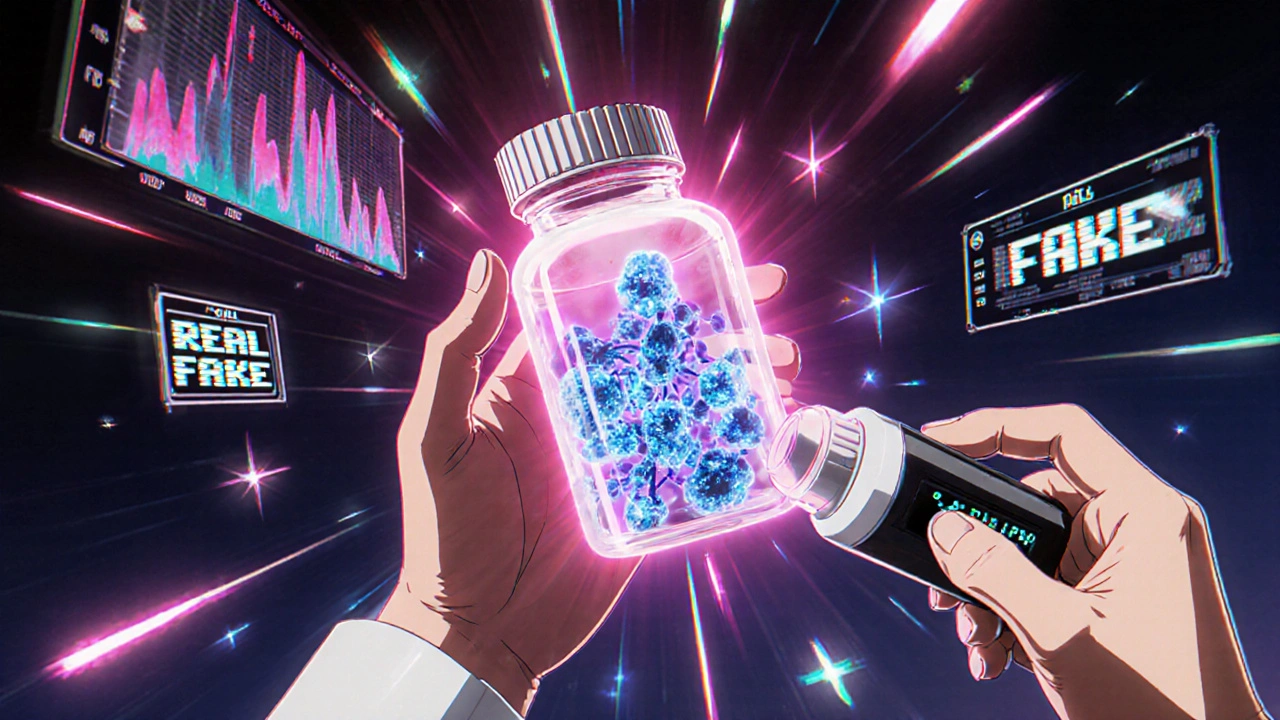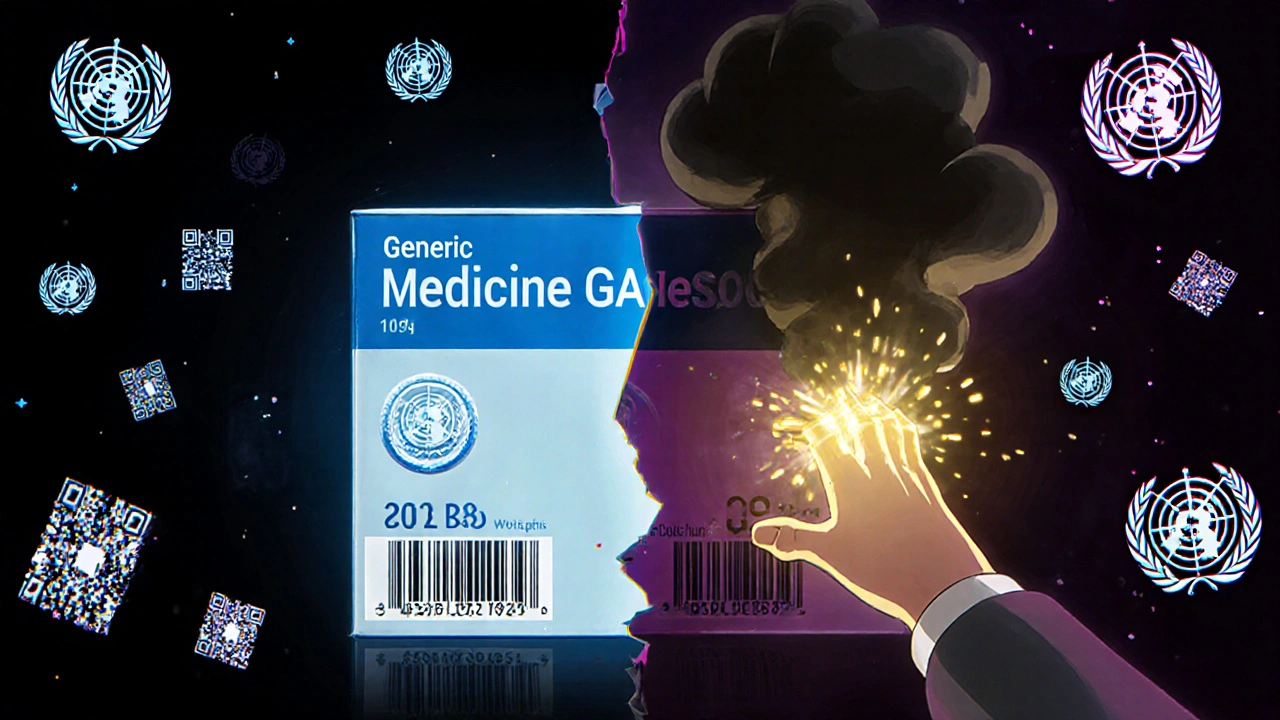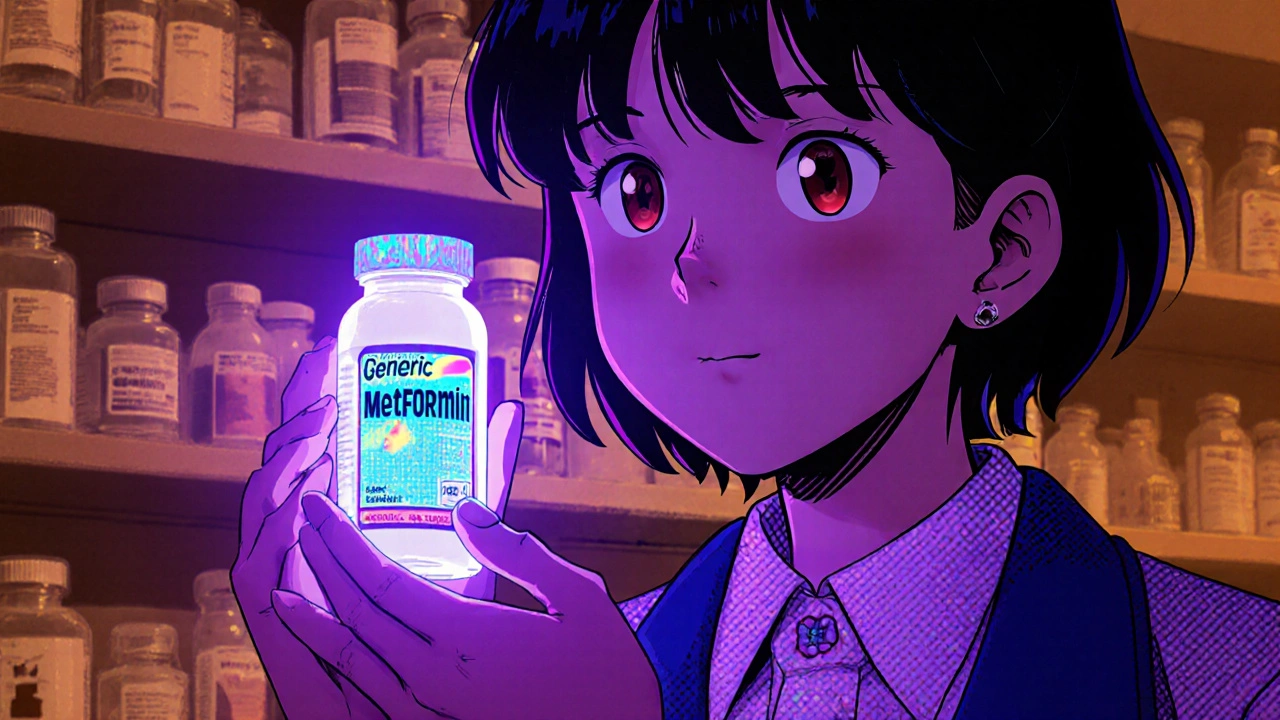Why Generic Medicine Packaging Can Be a Lifesaver
You picked up your generic metformin at the pharmacy. It looks just like the last bottle. Same color, same shape, same label. But what if it’s fake? Counterfeit drugs don’t always come with flashy warnings or misspelled names. Sometimes, they’re perfect replicas-so perfect that even pharmacists miss them. The World Health Organization estimates that 1 in 10 medicines worldwide are fake. In some regions, it’s closer to 1 in 3. And generics? They’re the most targeted. Why? Because they’re cheap, widely used, and often have weaker security features than branded drugs.
That’s why checking packaging isn’t just a good habit-it’s a critical safety step. You’re not just verifying a label. You’re checking whether the medicine inside will work, or whether it could harm you.
The Three Layers of Fake Drug Detection
Modern counterfeiters don’t guess-they copy. They use high-quality printers, real-looking materials, and even mimic the smell of real packaging. But they can’t copy everything. That’s where the three-layer verification system comes in: overt, covert, and track-and-trace.
Overt features are what you can see with your eyes. Think color-shifting ink, holograms, or raised text. Pfizer’s Viagra packaging, for example, uses ink that shifts from green to blue when you tilt the box. Johnson & Johnson puts UV-reactive ink on Tylenol boxes-visible only under a simple UV light. These aren’t fancy. They’re meant for you. If the color doesn’t shift, or the hologram looks blurry, walk away.
Covert features need a tool. UV lights, RFID scanners, or chemical taggants. These are invisible to the naked eye. A 2023 study found that 76% of community pharmacists couldn’t verify generics without reference samples or tools. That’s why many pharmacies now keep a $50 UV pen on the counter. It’s not expensive. It’s not complicated. And it catches more fakes than you’d think.
Track-and-trace is the backend system. Every box of prescription medicine in the EU and soon the U.S. has a unique 2D barcode. That code links to a national database. When you scan it, the system says: “This box was made by Company X on Date Y, shipped to Pharmacy Z.” The European system handles over 2.5 billion scans a year with 99.998% uptime. But here’s the catch: not all generics have it yet. In the U.S., the deadline for full serialization is 2026. Until then, you can’t rely on scanning alone.
What to Look for When You Open the Box
Don’t just glance. Compare. Here’s what real pharmacists check when they suspect a fake:
- Font size and spacing-Even small differences in the expiration date font can signal a fake. One Reddit user spotted a counterfeit Nexium® because the “2025” was slightly narrower than the real version.
- Color accuracy-Authentic packaging uses specific Pantone colors. Counterfeiters often get close, but not exact. A yellow that’s too orange? A blue that’s too purple? That’s a red flag.
- Seals and caps-Real blister packs have clean, even perforations. Fake ones often have jagged edges or misaligned seams.
- Batch numbers-If the batch number doesn’t match the one on the outer box, or if it looks smudged or printed over, question it.
- Label texture-Real labels feel like they’re printed on thick paper. Fakes often use thin, glossy paper that feels cheap.
One pharmacist in Ohio told Drug Topics: “I once held two identical-looking generic tablets. One was real. One was fake. The fake had a different smell-like plastic. I didn’t know until I opened the bottle.”

Why Spectroscopy Is the Real Game-Changer
Visual checks are helpful. But they’re not enough. A 2023 study in the Journal of Pharmaceutical Analysis showed that even experienced pharmacists missed 30-40% of sophisticated counterfeits using only sight and touch.
That’s where handheld spectrometers come in. Devices like the Thermo Fisher TruScan® RM and B&W Tek NanoRam® use infrared or Raman light to analyze the chemical makeup of a pill. They don’t need to open the bottle. Just point and scan. In under 30 seconds, they tell you if the active ingredient matches the label.
Here’s how it works: Real metformin has a specific molecular fingerprint. A fake might have cornstarch instead of the active drug. Or worse-talc, sugar, or even rat poison. Spectroscopy doesn’t care what the label says. It reads what’s inside.
These devices cost $15,000-$50,000. Not cheap. But in a hospital or large pharmacy, one device can verify hundreds of pills a day. And the results? 94% satisfaction rate among users. One pharmacist in Texas said: “The NanoRam® caught a fake that looked identical. Saved a patient from kidney failure.”
And here’s the kicker: NIR spectroscopy is 92-97% accurate at spotting coating defects and moisture differences-things you can’t see. Raman is great for identifying chemicals, but struggles with dark pills. That’s why many labs use both.
The Real Problem: Inconsistent Security on Generics
Branded drugs? They have strong packaging. High-security holograms. Blockchain tracking. Full serialization. Generics? Not so much.
A 2023 report from the Generic Pharmaceutical Association found that 35-45% of generic medicines in the U.S. still lack consistent serialization. Why? Because generics make up 90% of prescriptions but only 22% of drug spending. Manufacturers cut corners. Why spend $2 million on a track-and-trace system for a $5 pill?
That’s why pharmacists say verifying generics is 3 times harder than verifying branded drugs. No reference samples. No clear guidelines. No standardized security. You’re left guessing.
And it’s getting worse. INTERPOL’s 2023 Operation Pangea found that counterfeiters are now replicating security features with 90-95% accuracy. They’re copying UV inks. Holograms. Even 2D barcodes. The only thing they can’t easily copy? The chemical composition inside the pill.

What You Can Do Right Now
You don’t need a $50,000 machine to protect yourself. Here’s what works:
- Always check the packaging-Compare it to a previous bottle. Look for font changes, color shifts, or odd textures.
- Ask your pharmacist-If you’re unsure, ask them to verify it. Most community pharmacies now have UV lights. Some have spectrometers.
- Use the FDA’s guide-The FDA’s “Recognizing Substandard and Falsified Medicines” guide (updated March 2023) has clear photos and examples. Download it. Keep it on your phone.
- Don’t buy from unknown online pharmacies-Over 50% of counterfeit drugs come from unverified websites. Even if they look real.
- Report suspicious meds-If something feels off, report it to the FDA’s MedWatch program. Your report could stop a batch before it reaches others.
One last thing: Trust your gut. If the price is too good to be true, if the pharmacy doesn’t have a physical address, if the pills look slightly off-walk away. It’s not paranoia. It’s protection.
The Future: AI, Blockchain, and Global Standards
The good news? Things are changing. The FDA’s 2023 blockchain pilot for generics hit 99.2% accuracy. The EU’s 2025 update will require cryptographic authentication on all generic packaging. By 2026, the U.S. aims for 100% serialization of generics.
And AI is coming. Gartner predicts that by 2028, 70% of drug verification will use AI to combine visual, chemical, and tracking data into one smart check. Imagine pointing your phone at a pill bottle-and it instantly tells you: “Authentic. Made in Germany. Verified by EMVS. No recalls.”
But here’s the hard truth: Technology alone won’t fix this. Counterfeiting is a global problem. A fake pill made in India can end up in a pharmacy in Ohio. A lab in Nigeria can ship fakes to Canada. That’s why the WHO says: “National systems alone can’t solve this.” We need global standards. Shared databases. Harmonized rules.
Until then, you’re the last line of defense. Your eyes. Your questions. Your willingness to check.
How can I tell if my generic medicine is fake?
Start by comparing the packaging to a previous bottle. Look for differences in font, color, texture, or seal quality. Use a UV light to check for hidden markings. If the pill looks or smells odd, or if the barcode doesn’t scan properly, ask your pharmacist to verify it with a spectrometer. Never ignore small inconsistencies-they’re often the first sign of a counterfeit.
Are generic drugs more likely to be counterfeit than brand-name drugs?
Yes. Generics make up 90% of prescriptions in the U.S. but only 22% of spending. Because they’re cheaper, manufacturers often invest less in security features like holograms, UV inks, or serialization. Counterfeiters target them because they’re widely used and easier to replicate without raising suspicion. That’s why verifying generics is more critical than verifying branded drugs.
Can I use my phone to scan and verify my medicine?
Some apps can scan 2D barcodes on prescription packages, but they only work if the drug is properly serialized. Many generics still lack this. Apps like MediMark work well for branded drugs but fail 40-50% of the time with generics due to inconsistent labeling. Don’t rely on apps alone. Use them as a supplement, not your only tool.
What should I do if I think I’ve been given a fake drug?
Don’t take it. Save the packaging and the pills. Contact your pharmacist immediately. Ask them to report it to the FDA through MedWatch. You can also report it yourself at fda.gov/medwatch. Your report helps track counterfeit trends and can prevent others from being harmed.
Do all pharmacies have tools to verify medicines?
Most large pharmacies and hospitals have UV lights or handheld spectrometers. Small community pharmacies may only have UV pens. If you’re unsure, ask. Many pharmacists now keep verification tools on hand because they’ve seen too many fakes. Don’t be embarrassed to ask-your safety matters more than convenience.
Is it safe to buy generic drugs from online pharmacies?
Only if the pharmacy is verified by the National Association of Boards of Pharmacy (NABP). Look for the VIPPS seal. Over half of counterfeit drugs sold online come from unlicensed websites. Even if the site looks professional, if it doesn’t require a prescription or ships from overseas, it’s not safe. Always buy from licensed U.S. pharmacies or those with verified international credentials.

Jefriady Dahri
November 23, 2025 AT 13:22Arup Kuri
November 24, 2025 AT 14:14Elise Lakey
November 26, 2025 AT 07:20Erika Hunt
November 27, 2025 AT 04:53Sharley Agarwal
November 27, 2025 AT 12:30